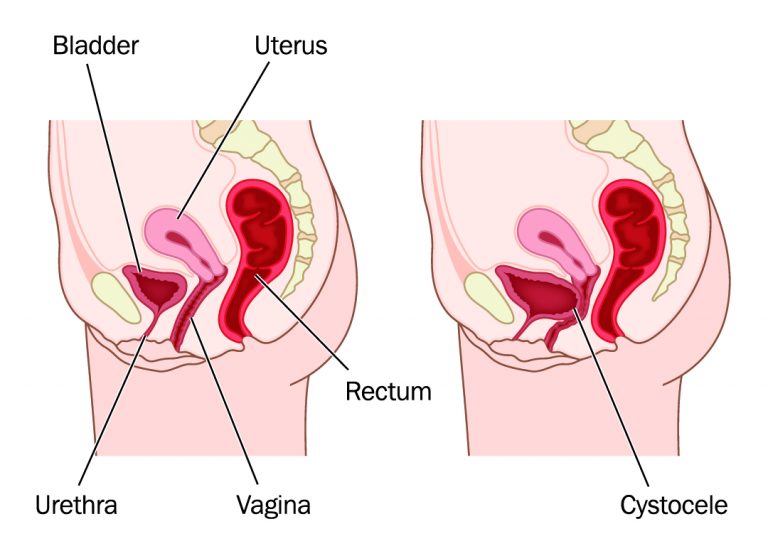WHAT IS PELVIC ORGAN PROLAPSE REPAIR?
Pelvic organ prolapse occurs when the pelvic organs (bladder, rectum, or uterus) push into the vaginal canal due to the weakening of pelvic muscles. These are repaired in several different ways, either conservatively, with non-surgical treatments or with surgery.
Women who experience urinary incontinence often have this procedure to treat symptoms caused by prolapse and stress incontinence, which is treated with a urethral sling.
The type of surgical procedure conducted depends on the amount (degree) of prolapse and the location. Specific procedures include:
- Cystocele repair refers to the repair of the bladder prolapse. This can be done through a vaginal surgery and involves the reconstruction of the vaginal wall and tissue between the bladder and the vagina. This can be done with and without the use of transvaginal synthetic mesh.
- Rectocele repair refers to the repair of rectum prolapse. This repair can be performed through a vaginal surgery and involves the reconstruction of the vaginal wall and tissue between the rectum and the vagina. This can be done with and without the use of transvaginal synthetic mesh.
- Apical repair refers to the repair of uterine prolapse or prolapse of the top (apex) of the vagina. This involves much more complex techniques to repair the prolapse. There are two common techniques, which involve fixating the top of the vagina to two different ligaments in the lower pelvic region.
- 1.) Sacrospinous Ligament Fixation- This is done vaginally
- 2.) Sacrocolpopexy- This is done laparoscopically or abdomenally.
Learn more about these procedures.

WHY IS SYNTHETIC MESH SOMETIMES USED IN PELVIC ORGAN PROLAPSE REPAIR AND WHAT ARE THE RISKS?
Understanding the conversation around transvaginal and synthetic mesh can be confusing.
Here are the findings:
- Previously, transvaginal mesh use was associated with improved short-term outcomes for repair of bladder prolapse, as compared with procedures without the use of mesh. However, the FDA has issued several documents regarding the use of reconstructive materials for female pelvic floor surgery, pointing to safety risks and uncertain effectiveness. For example, the most common complication of transvaginal mesh placement is mesh erosion. The rate of mesh erosion has been shown to be as high as 30 percent.
- Therefore, it’s recommended that women get a second opinion if her surgeon recommends the use of mesh for a bladder or rectum prolapse surgery.
- In contrast, use of mesh for uterus prolapse repair or for full-length slings (for incontinence treatment) are considered safe and effective.
WHAT ARE THE MAJOR RISKS ASSOCIATED WITH PELVIC ORGAN PROLAPSE REPAIR?
Like any surgical procedure, pelvic organ prolapse repair is associated with certain risks. These may include excessive blood loss, an infection requiring antibiotic treatment, developing scar tissue, and childbirth complications.
HOW LONG IS RECOVERY?
Recovery is dependent upon the extent of the organ prolapse and the type of surgery the woman has undergone.